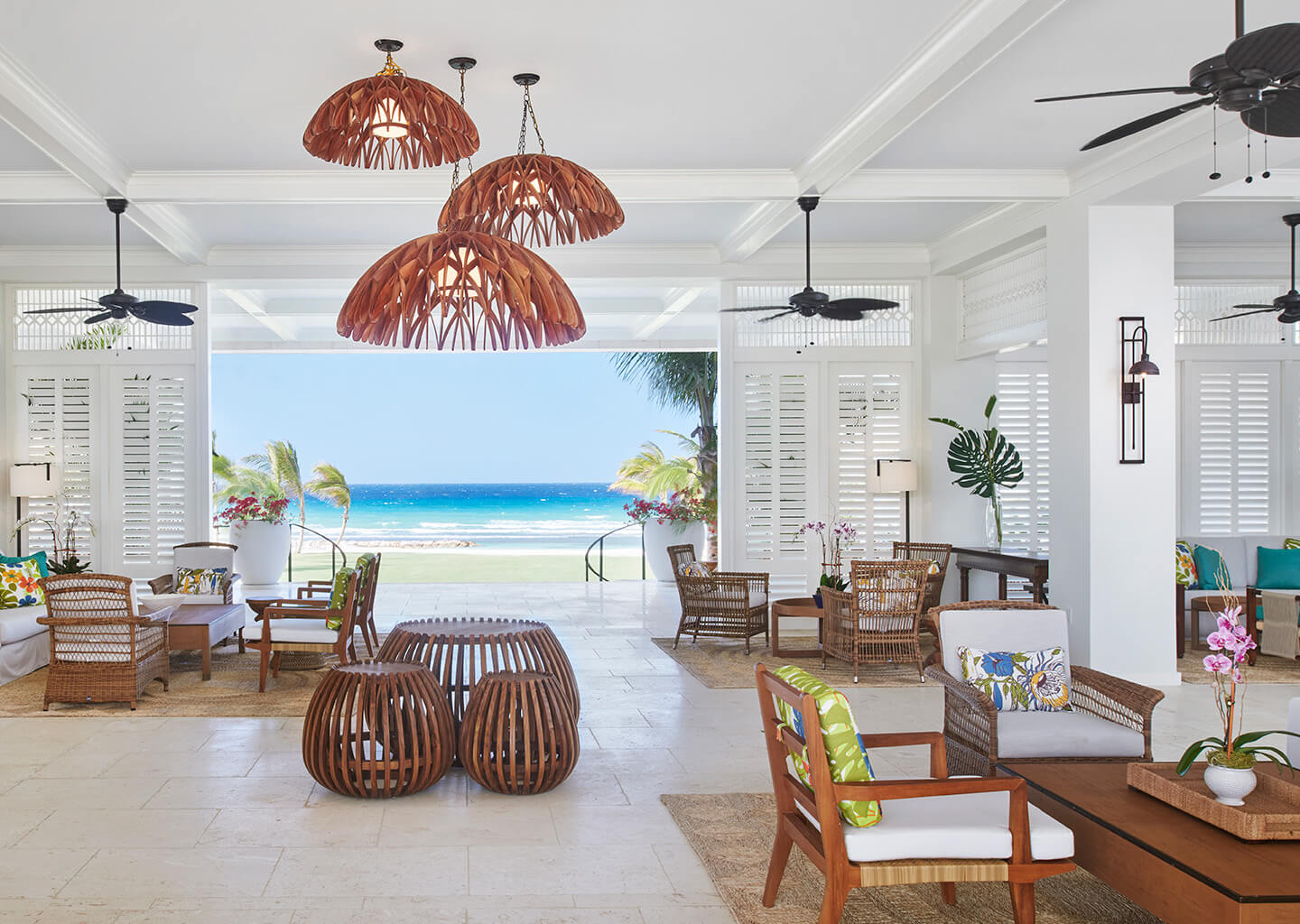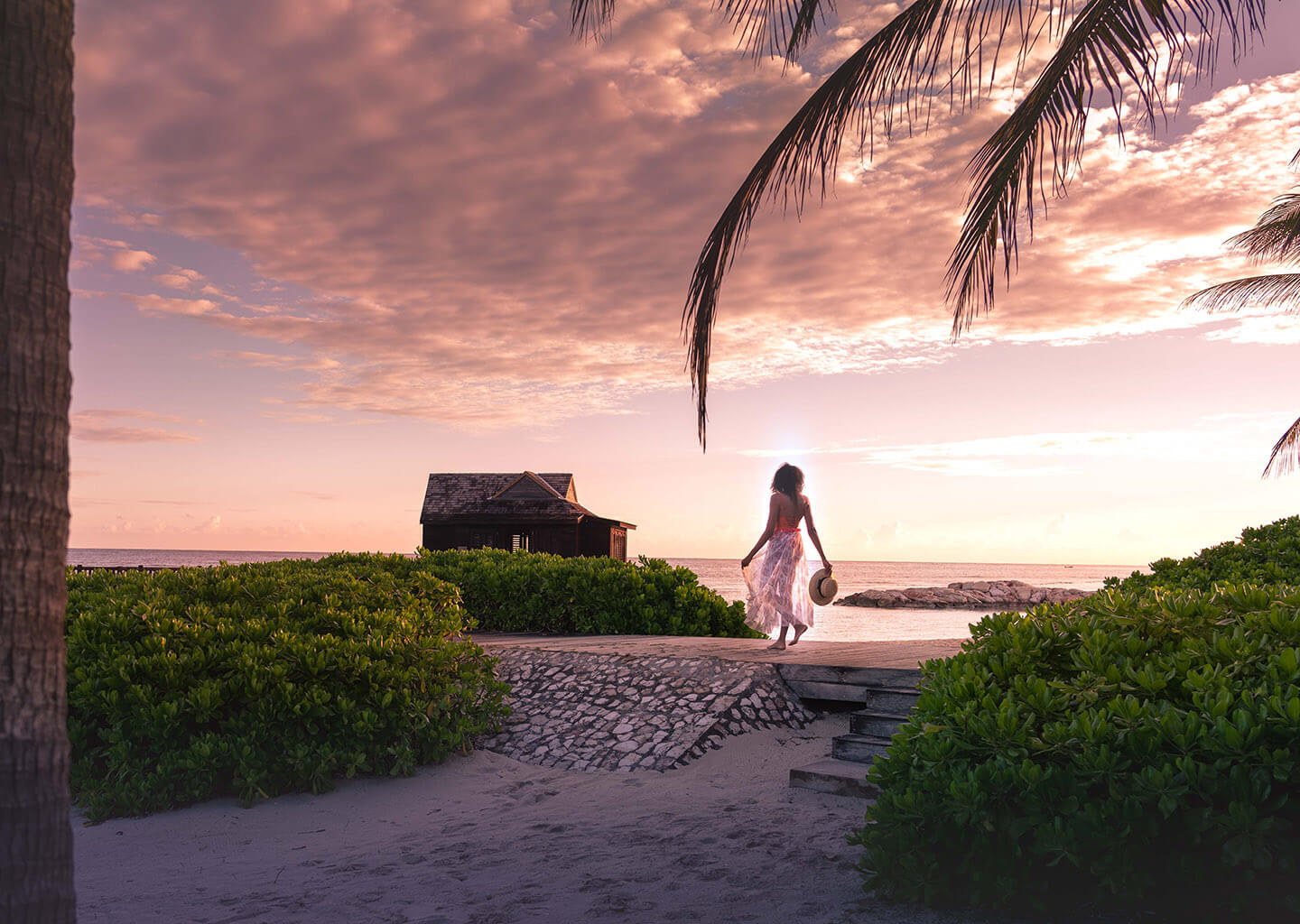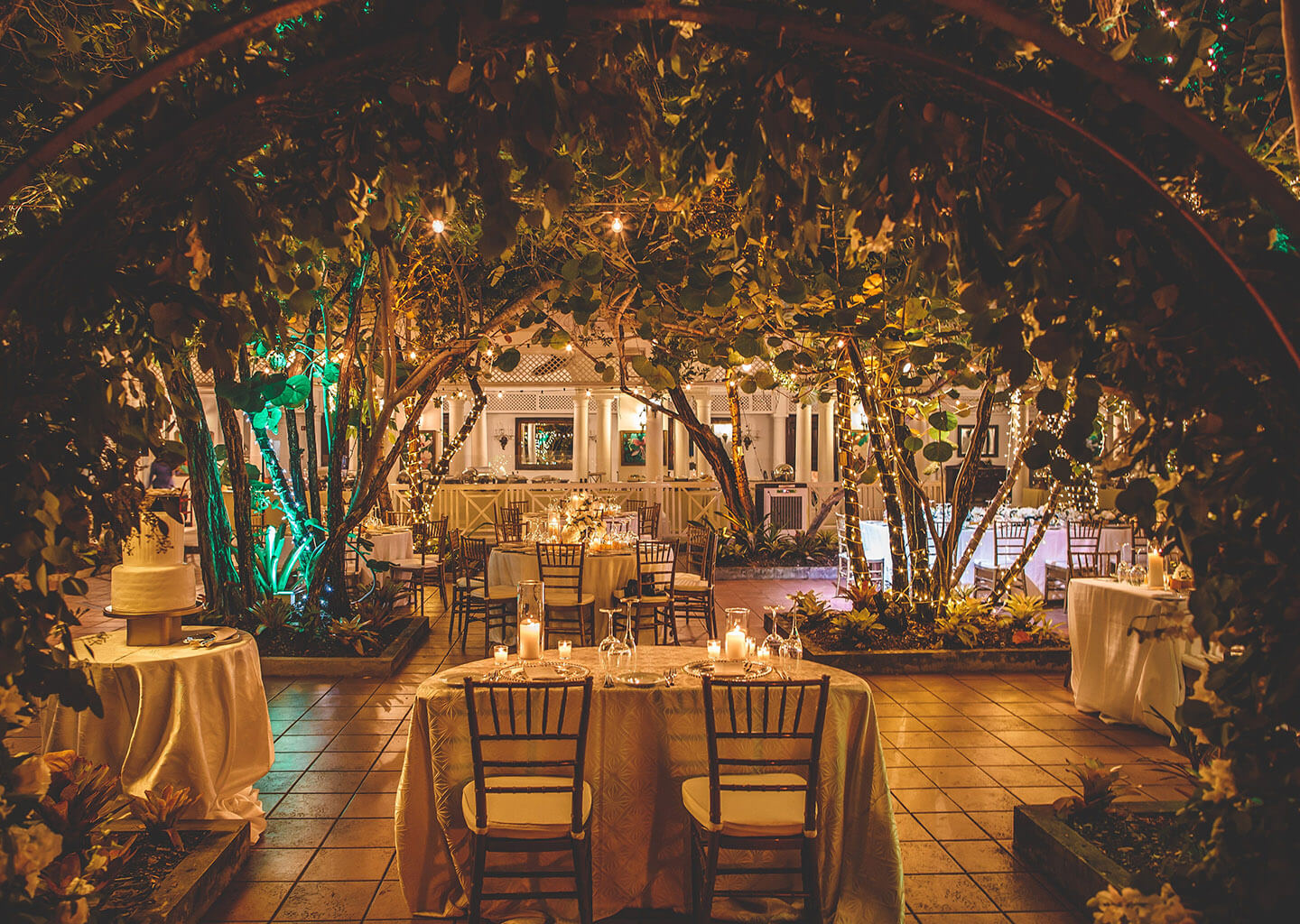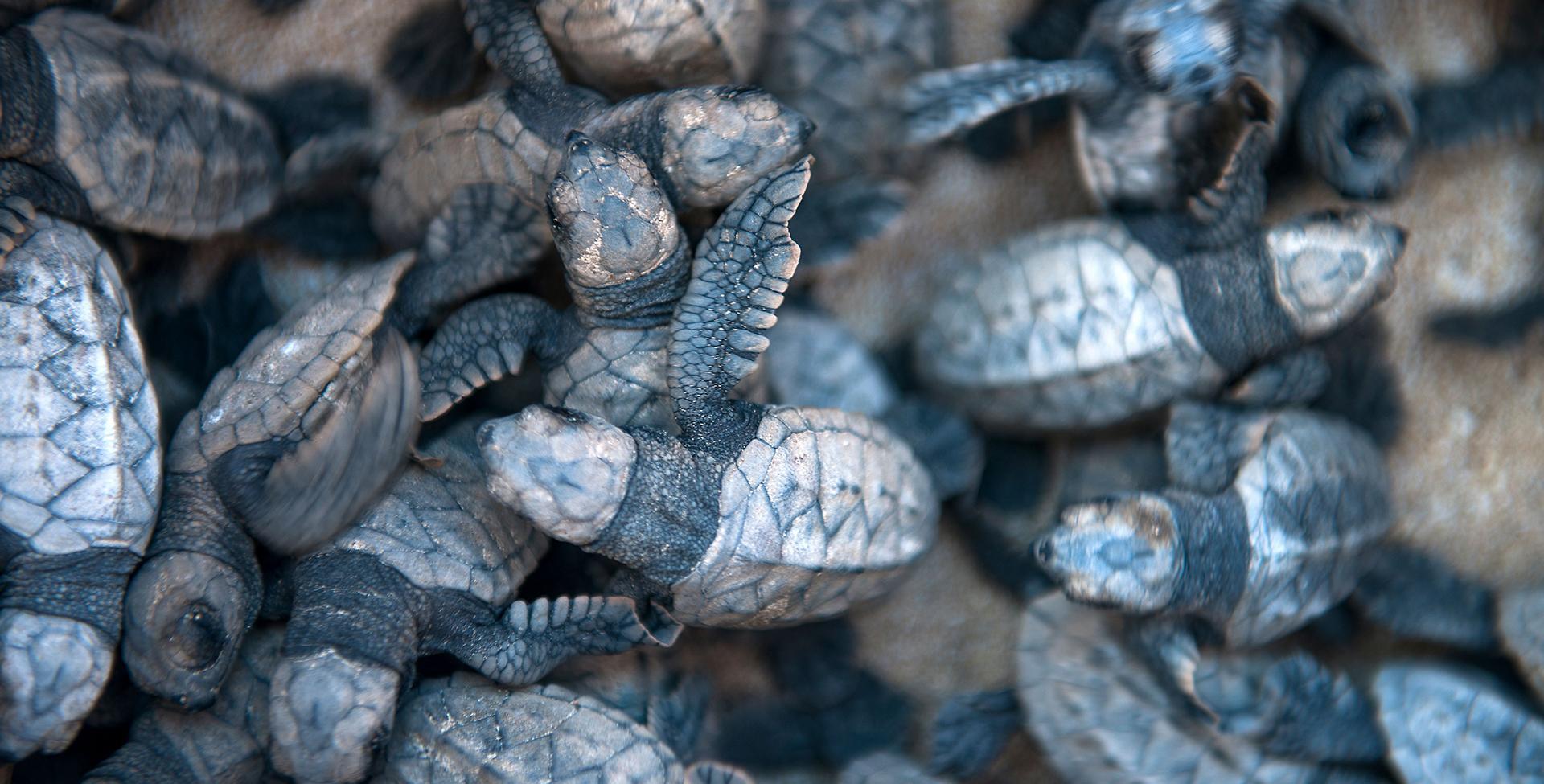Sea Turtle Conservation
One of our values is respect for our team, our guests, and our planet. Since Half Moon’s inception in 1954, we have pioneered ecological programs, which led to our resort becoming the first hotel to be inducted into the Caribbean Hotel Industry Conference Green Hotel Hall of Fame.
Our environmental and social commitment practices are verified by Green Globe; we are truly proud to be stewards of our environment, our country, our region, and our planet. Environmental consciousness is a part of who we are. Our Beaches are home to marine life, including the sea turtle in particular, the Hawksbill Sea Turtle. Through our sea turtle program, we continue to invest in our environment through sustainable practices and education.
The nesting season of 2023-24 concluded in April, with 20 nests, 1577 eggs, and 1182 viable hatchlings successfully reaching the sea. Over the years, the total number of hatchlings has surpassed 12,000. The 2024-25 season began on April 18, 2024, and concluded with us observing and caring for 40 nesting Hawksbill turtles, resulting in 4771 eggs and 3210 hatchlings, marking the end of the nesting season.
The 2025 -2026 nesting season has seen remarkable activity. A total of 10 nests have been documented thus far as we continue our efforts to protect, nesting habitats, mitigate predation, and reduce human impact are crucial to ensure the survival of these incredible species. Thank you to all our volunteers, conservationists, and guests who play a vital role in safeguarding these majestic creatures.
Common Name:
Hawksbill sea turtles
Scientific Name:
Eretmochelys imbricata
Type:
Reptiles
Diet:
Carnivore
Average Life Span in the Wild:
30 to 50 years
Size:
24 to 45 inches
Weight:
150 pounds
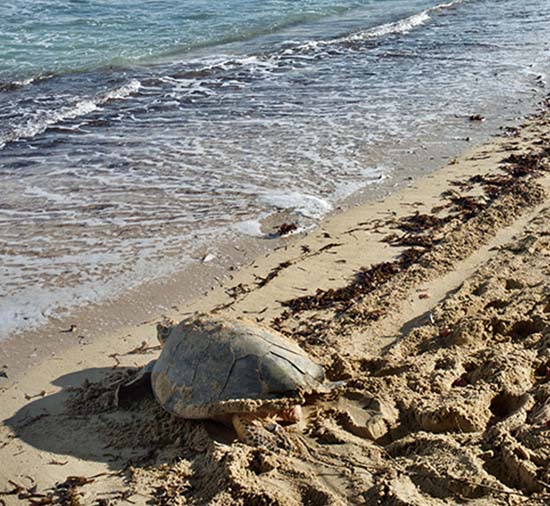
Hawksbill sea turtles are the most endangered sea turtle population in the world. Female Hawksbill turtles return to the same nesting grounds they were born to lay their eggs. Nesting begins when the turtles leave the sea to lay their eggs. They migrate long distances to nest, which are normally on tropical beaches. They lay anywhere from 130 to 160 eggs and cover their nest before returning to the sea. Typically, eggs will hatch in about 60 days. The most dangerous time of their lives is when hatchlings make the journey to sea, while they’re prey to crabs and birds.
This is where Half Moon plays an important role in the sea turtles’ safety. By being present at the time of hatching, guests and staff increase the chance of survival for these tiny beings, allowing us to contribute to the protection of the most endangered sea turtle population in the world.
Through our partnership with Oracabessa Marine Trust, Half Moon offers staff training in the sustainability of our environment to preserve marine life. Staff who are trained are also licensed as wardens through the National Environment Planning Agency (NEPA), allowing us to enforce regulations under the Wildlife Protection Act, to create habitats for new life.

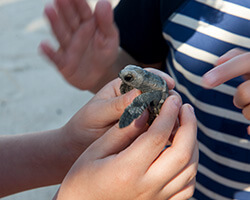
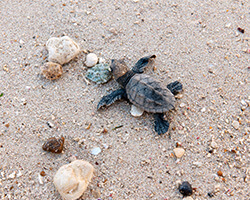
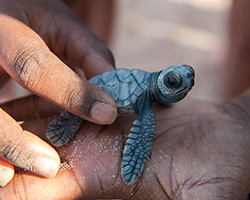
| Nest # | Location | Date Laid | Potential Hatching Date (between) |
|---|---|---|---|
| 1 | Sunrise Beach | April 15, 2025 | June 9 - 19, 2025 |
| 2 | Sunrise Beach | April 25, 2025 | June 19 - 29, 2025 |
| 3 | Sunrise Beach | April 30, 2025 | June 24 - July 4, 2025 |
| 4 | Sunrise Beach | May 11, 2025 | July 5 - 15, 2025 |
| 5 | Sunrise Beach | May 18, 2025 | July 12- 25, 2025 |
| 6 | Hibiscus Beach | May 23, 2025 | July 17- 27, 2025 |
| 7 | Sunrise Beach | May 27, 2025 | July 21 - 31, 2025 |
| 8 | Sunrise Beach | June 12, 2025 | August 6 - 16, 2025 |
| 9 | Sunrise Beach | July 3, 2025 | August 27 - September 6, 2025 |
| 10 | Sunrise Beach | July 5, 2025 | August 29 - September 8, 2025 |
| 11 | Hibiscus Beach | July 11, 2025 | September 3 - 13, 2025 |
| 12 | West Cottage 1 | July 13, 2025 | September 5 - 15, 2025 |
| 13 | Sunrise Beach | July 13, 2025 | September 5 - 15, 2025 |
| 14 | Hibiscus Beach | July 21, 2025 | September 13 - 23, 2025 |
| 15 | Sunrise Beach | July 28, 2025 | September 20- 30, 2025 |
| 16 | Sunrise Beach | August 2, 2025 | September 25 - October 10, 2025 |
| 17 | Sunrise Beach | August 4, 2025 | September 27 - October 12, 2025 |
| 18 | Sunrise Beach | August 5, 2025 | September 28 - October 13, 2025 |
It is estimated that potential hatchlings will emerge approximately 55 to 65 days after the laying date.
